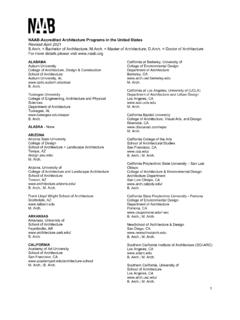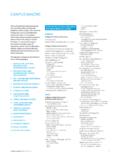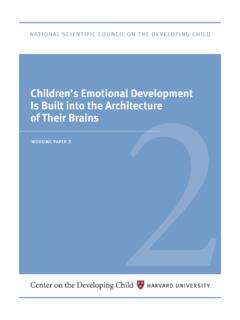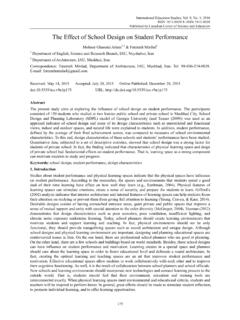Transcription of Impact of the Built Environment on Health
1 HEALTHYCOMMUNITYDESIGNFact Sheet Series(Continued on next page)National Center for Environmental HealthDivision of Emergency and Environmental Health ServicesCS216341 Impact of the Built Environment on HealthWhat Is the Public Health Issue?The Built Environment includes all of the physical parts of where we live and work ( , homes, buildings, streets, open spaces, and infrastructure). The Built Environment influences a person s level of physical activity. For example, inaccessible or nonexistent sidewalks and bicycle or walking paths contribute to sedentary habits. These habits lead to poor Health outcomes such as obesity, cardiovascular disease, diabetes, and some types of cancer. Today, approximately two thirds of Americans are overweight. What Has CDC Accomplished?CDC s activities promoting healthy community design include the following.
2 Health Impact Assessment (HIA) Established HIA capacity-building programs on the local and state levels in Oregon, California, Minnesota and HIA online training course with the American planning Association and the National Association of City and County Health a peer-review study of 27 HIAs completed in the from 1999 to with Pew Charitable Trust/Robert Wood Johnson Foundation to identify all HIAs conducted in the and to develop an evaluation strategy to assess the Health impacts of those the HIA component of the HHS/HUD Livable Homes and Communities an Institute of Medicine report on HIA practice in the Surveillance Funded the Bicycling and Walking in the United States Benchmarking Report, an ongoing effort to collect and analyze data on bicycling and walking in all 50 states and at least the 50 most-populated the American planning Association s Comprehensive planning for Public Health : Results of the planning and Community Health Research Center.
3 This report highlights the results of a web-based survey used to identify draft and adopted comprehensive and sustainability plans that explicitly address public community design questions for the Census Bureau s American Housing Survey and CDC Division of Adolescent and school Health s school Health Policies and Practices Study, and worked with them to ensure their inclusion in upcoming national community design indicators to be added to CDC s National Environmental Public Health Tracking 2011 Evaluation Funded the Safe Routes to school (SRTS) National Partnership on an evaluation of SRTS coordinators in low-income schools around the country. The evaluation showed that a small salary that supports an SRTS coordinator enables the implementation of successful SRTS programs, increasing the number of children walking and biking to school in areas where fewer parental resources exist to build SRTS with the ongoing evaluation of the Nonmotorized Transport- ation Pilot Program, a Department of Transportation program that funds four communities to invest heavily in bicycle and pedestrian on the national review group for the Department of Transportation-funded National Center for Safe Routes to school (SRTS)
4 To help them devise an approach to evaluating the national SRTS and Communications Developed a model curriculum for a public Health and community design incorporate Health considerations into the LEED for Neighbor- hood Development rating dissertation support grants to public Health /community doctorial candidates in cooperation with the Association for Schools Public Health . These grants help recipients pursue their studies while receiving guidance and input from CDC the University of Virginia school of architecture s Web site Public Health + Built Environment : Course Curriculum that offers an interdisciplinary undergraduate, graduate, or continuing education curriculum in public Health and Built Environment . Funded an Internet forum created by the American planning Association that allows planning and public Health professionals to discuss relevant topics, communicate views, and exchange a Healthy Community Design Expert Workshop of 20 top Built Environment thought leaders from various disciplines to discuss how to raise awareness among their peers about the Health Impact of community design a Healthy Places Web site ( ) and distribute the Healthy Community Design e-News monthly to more than 1,200 CDC Livability listserv Are the Next Steps?
5 To encourage healthy community design, CDC builds collaborations across multiple disciplines such as transportation, urban planning , architecture , and public Health law. These interactions help CDC develop guidelines, support pilot projects, and educate current and future planners and public Health professionals about designing healthier communities. For further information about designing and building healthy places, go to



















